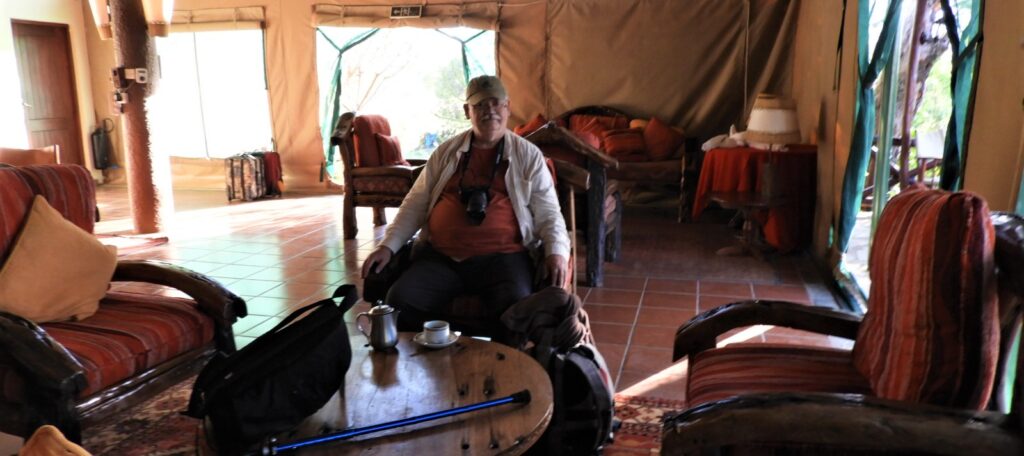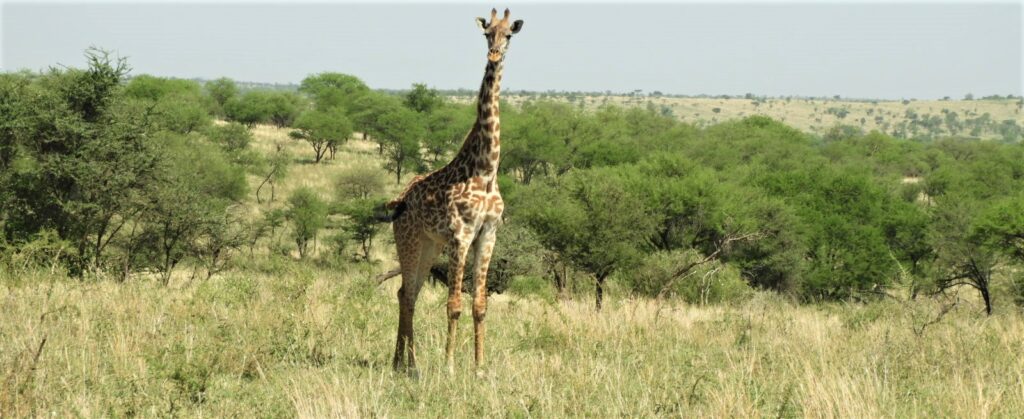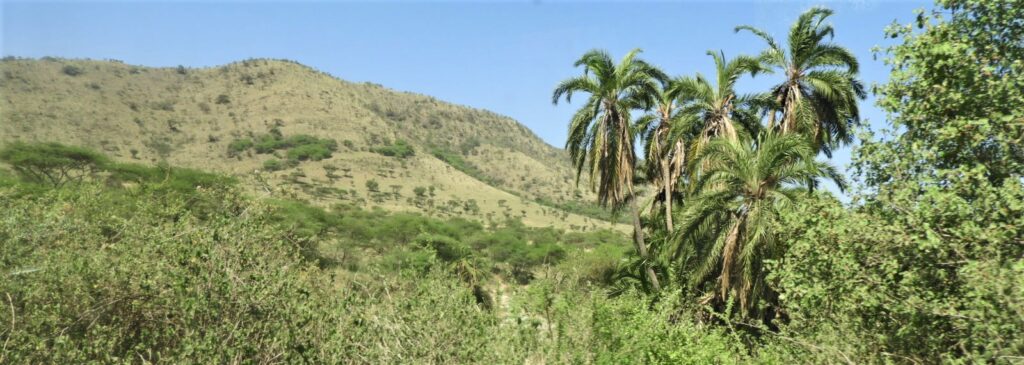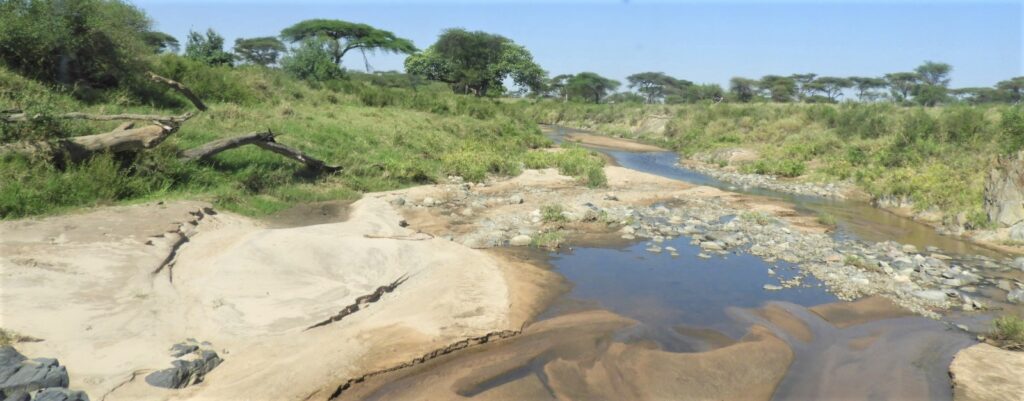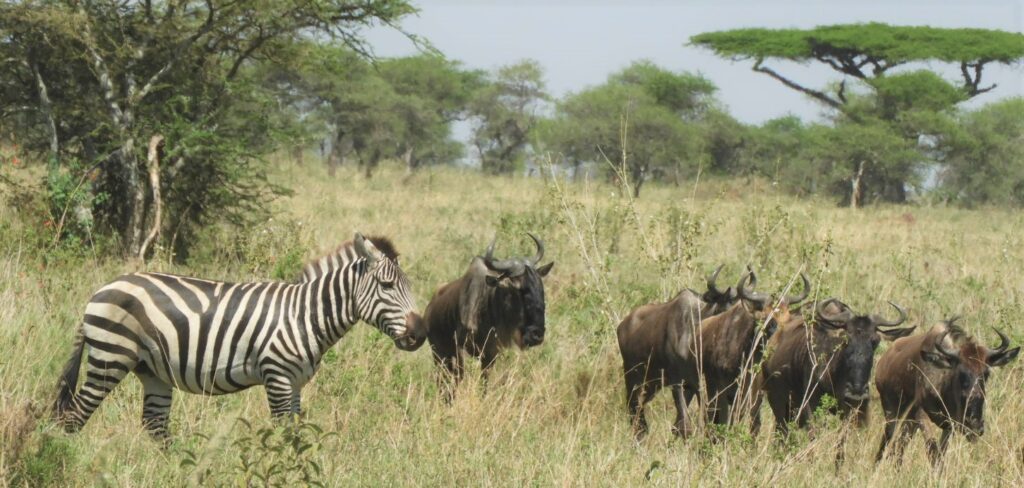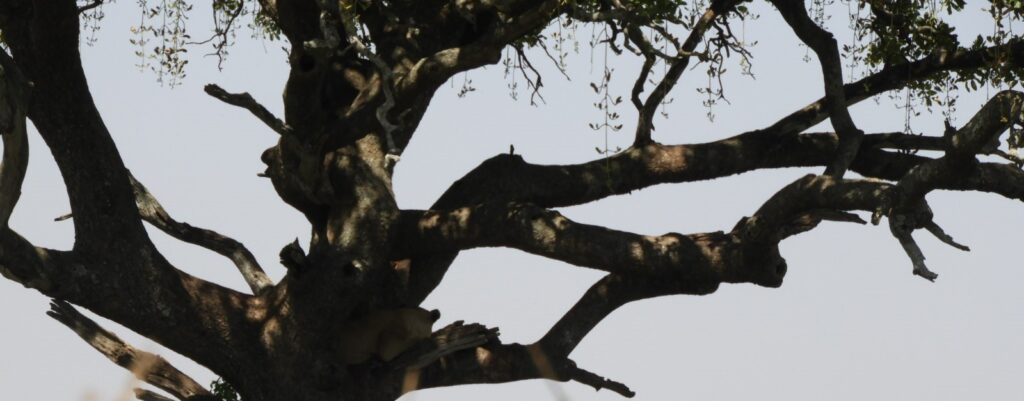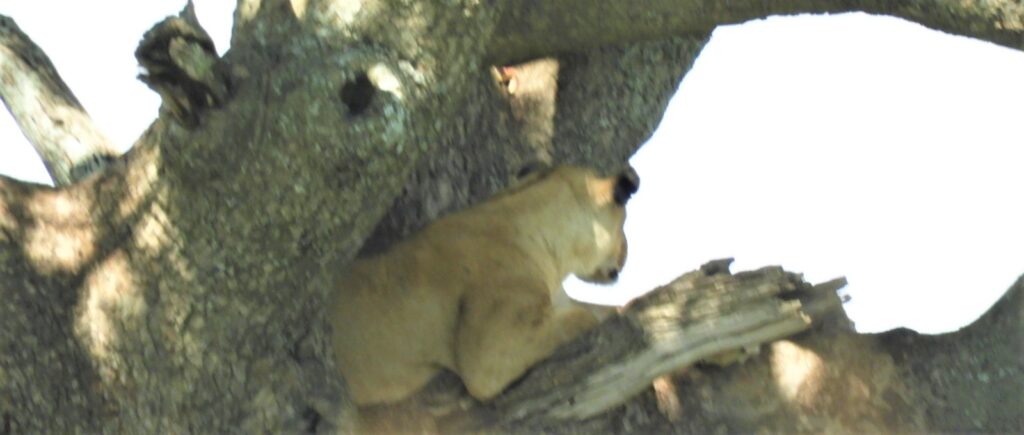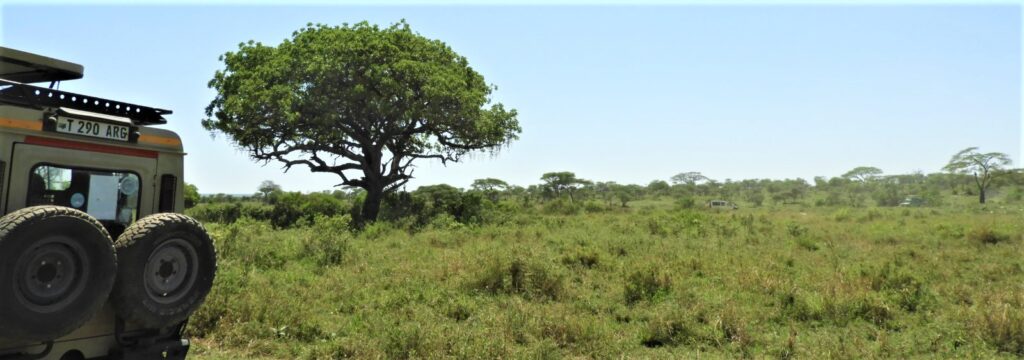» posted on Saturday, September 24th, 2022 by Linda Lou Burton
Even Safaris End
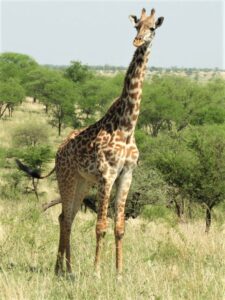 Linda Lou Burton posting from Seronera Airstrip, Serengeti National Park, Tanzania–Some things you never want to forget. I’ll remember my gripes about this fast-paced-energy-charged safari for a long time. It’s been exhausting! But I’ll remember the giraffes forever. That very first day, when I gently placed a pellet on the gray velvet tongue of a giraffe and looked straight into those eyes with their Hollywood lashes, I was forever taken in. They look amazing in the wild too; in every photo I took, zooming across the grasslands, those beautiful long lashes stand out. I’ll remember the neat-looking zebras, and their unlikely best buds, the scraggly wildebeests, what an odd, but wildly successful, relationship! I’ll remember the pudgy hippos with their sublime mudpuddle grins and the rhinos with those not very attractive outgrowths stuck to the top of their faces that make them a desirable target for mean money makers. I’ll remember the elephants, going at life full-force, pushing over trees and slinging dust every which way, but so tender hearted they grieve when they lose a loved one. I’ll remember the many species of antelope, with their dainty, pretty, sometimes
Linda Lou Burton posting from Seronera Airstrip, Serengeti National Park, Tanzania–Some things you never want to forget. I’ll remember my gripes about this fast-paced-energy-charged safari for a long time. It’s been exhausting! But I’ll remember the giraffes forever. That very first day, when I gently placed a pellet on the gray velvet tongue of a giraffe and looked straight into those eyes with their Hollywood lashes, I was forever taken in. They look amazing in the wild too; in every photo I took, zooming across the grasslands, those beautiful long lashes stand out. I’ll remember the neat-looking zebras, and their unlikely best buds, the scraggly wildebeests, what an odd, but wildly successful, relationship! I’ll remember the pudgy hippos with their sublime mudpuddle grins and the rhinos with those not very attractive outgrowths stuck to the top of their faces that make them a desirable target for mean money makers. I’ll remember the elephants, going at life full-force, pushing over trees and slinging dust every which way, but so tender hearted they grieve when they lose a loved one. I’ll remember the many species of antelope, with their dainty, pretty, sometimes  fairytale swirls of horns, and the big broad sweep of the buffalo’s “boss” stretching across the top of his head. I’ll remember the land plover, fearlessly guarding her two tiny eggs laying among the rocks at the side of the road. As for the lions, well sure, I know they have teeth and jaw powerful enough to bite off my arm, but what I’ll remember is all that sleeping, and stretching, and sleeping, just like my sweet little Katy cat. Overall in my memories, however, is the land, the landscape, the home for these animals. The acacia trees dotted across the open plains are planted firmly in my dreams. What a fitting place to end our safari today – the Serengeti. Even the name is beautiful – “serengeti” is an approximation of the word “siringet” used by the Maasai meaning “the place where the land runs on forever.”
fairytale swirls of horns, and the big broad sweep of the buffalo’s “boss” stretching across the top of his head. I’ll remember the land plover, fearlessly guarding her two tiny eggs laying among the rocks at the side of the road. As for the lions, well sure, I know they have teeth and jaw powerful enough to bite off my arm, but what I’ll remember is all that sleeping, and stretching, and sleeping, just like my sweet little Katy cat. Overall in my memories, however, is the land, the landscape, the home for these animals. The acacia trees dotted across the open plains are planted firmly in my dreams. What a fitting place to end our safari today – the Serengeti. Even the name is beautiful – “serengeti” is an approximation of the word “siringet” used by the Maasai meaning “the place where the land runs on forever.”
Early morning packing (don’t forget that hustle!) to taking pictures of each other, just before boarding our plane. The first animals of the day were two cape buffalo by our front porch (yes, I called security). The last animal (surprise!) was the long awaited “tree-climbing lion.” I reminded Willy of our fruitless search at Lake Manyara, saying “Willy, don’t let us leave forever without seeing a lion in a tree.” By golly, he found one. Do you see a lion in that nice shady tree? Willy did! He moved the 4×4 so we could see both back and front.
Serengeti National Park is a World Heritage Site covering 5,700 square miles of grassland plains, savanna, riverine forest, and woodlands. It lies in northwestern Tanzania, bordered to the north by Kenya, where it adjoins the Maasai Mara National Reserve. To the southeast is the Ngorongoro Conservation Area, to the southwest the Ikorongo and Grumeti Game Reserves, and to the northeast and east the Loliondo Game Control Area. This space teems with wildlife – over 2 million ungulates, 4,000 lions, 1,000 leopards, 550 cheetahs, and some 500 bird species. The Serengeti is well known for the largest annual animal migration in the world of over 1.5 million blue wildebeest and 250,000 zebra along with smaller herds of Thomas’ Gazelle and eland. The Park is also home to the largest lion population in Africa.
The park is divided into three regions:
- Serengeti plains: The best-known feature of the Serengeti is the almost treeless grassland in the south. It has kopjes, granite formations that serve as observation posts for predators.
- Western corridor: The Grumeti and Mbalageti. Rivers, big groups of riverine forest, and small mountain ranges stretch to Lake Victoria. The great migration passes through the corridor from May to July.
- Northern Serengeti: This remote and relatively inaccessible area is dominated by open woodlands and hills, ranging from Seronera in the south to the Mara River on the Kenyan border.
Human habitation is forbidden in the Park except for the Tanzania National Parks Authority staff, researchers and staff of the various lodges, campsites, and hotels. The main settlement is Seronera with its primary airstrip.
Serengeti National Park https://www.serengeti.com/
Next Post: A Story Of Water


